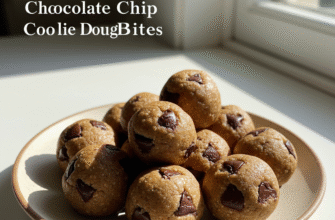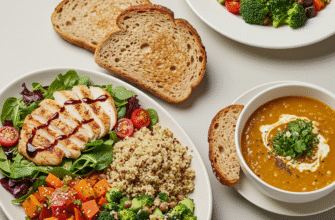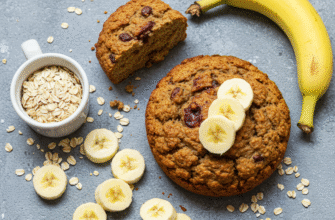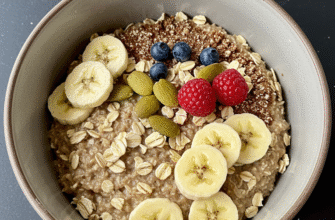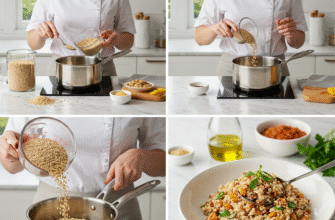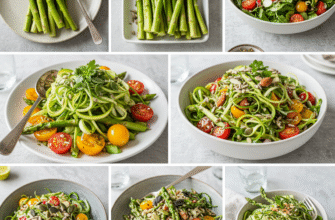Exploring the world of sugar alternatives in baking can feel like venturing into a new culinary landscape. Among the options gaining traction is xylitol, a sugar alcohol naturally found in small amounts in fruits, vegetables, and even the human body. Commercially, it’s often extracted from birch bark or corn cobs. But how does this granular white substance fare when swapped for traditional sugar in your favourite cakes, cookies, and muffins? Let’s dive into the practicalities of baking with xylitol.
Why Consider Xylitol for Baking?
The primary driver for many turning to xylitol is its relationship with sugar reduction. It boasts a sweetness remarkably similar to sucrose (table sugar) but with fewer calories – roughly 40% less. This makes it an appealing option for those looking to lighten up their baked treats without sacrificing that familiar sweet taste. Unlike sugar, it doesn’t cause sharp spikes in blood glucose levels, although we’re focusing purely on its baking properties here, not specific health implications.
Its near identical sweetness level to sugar means it can often be substituted in a 1:1 ratio, simplifying recipe conversion compared to some other intense sweeteners that require minuscule amounts and bulking agents. This straightforward substitution is a significant advantage for home bakers dipping their toes into sugar-alternative baking.
Understanding Xylitol’s Behaviour in the Oven
Swapping ingredients isn’t always seamless, and xylitol has distinct characteristics that differ from sugar, influencing the final texture, appearance, and even shelf life of your baked goods.
Sweetness and Flavour Profile
As mentioned, xylitol mirrors sugar’s sweetness closely. Most palates won’t detect a significant difference in sweetness intensity when used in a 1:1 swap. Some people notice a mild, almost minty or cool aftertaste, particularly when xylitol is tasted on its own or used in high concentrations, like in frostings. This cooling effect happens because xylitol absorbs heat from its surroundings as it dissolves (an endothermic process). In most baked goods, however, this sensation is minimal to non-existent.
Texture, Volume, and Creaming
Sugar plays a crucial role in the texture and structure of baked goods. It contributes to tenderness by interfering with gluten development and protein coagulation. It also helps incorporate air when creamed with butter, leading to lighter cakes and cookies. Xylitol, being crystalline like sugar, can perform similarly in providing bulk and structure. It can be creamed with butter, although some bakers find it might not incorporate quite as much air as sugar, potentially leading to slightly denser results. The final texture is often very comparable to sugar-baked items, especially in cakes and muffins.
The Browning Conundrum
Here lies one of the most significant differences: xylitol does not caramelize or undergo the Maillard reaction like sugar does. This reaction between sugars and amino acids is responsible for the desirable golden-brown crust and complex flavours developed during baking. Baked goods made solely with xylitol will often be paler than their sugary counterparts, even when fully cooked.
How to manage this?
- Don’t rely solely on colour to judge doneness; use a toothpick test or internal temperature check.
- You can slightly increase the baking temperature (by about 10-15°F or 5-10°C) or extend the baking time, keeping a close eye to prevent drying out.
- Incorporate ingredients that promote browning naturally, like molasses (if your diet allows), egg yolks, or milk powder.
- A light egg wash on top of pastries or cookies before baking can also help achieve a more golden appearance.
Moisture Retention
Xylitol is hygroscopic, meaning it attracts and holds onto water molecules from the surrounding environment. This can be both a benefit and a drawback. On the plus side, it can result in moister cakes and muffins that stay fresh longer. The downside is that cookies might turn out softer rather than crisp, or baked goods could become slightly gummy or overly moist, especially in humid conditions or if the recipe’s liquid content isn’t adjusted slightly downwards.
Crystallization
Xylitol has a tendency to recrystallize as it cools, more so than sugar. This isn’t usually noticeable within the structure of a cake or muffin, but it can be an issue in candies, syrups, and some types of frostings, potentially leading to a gritty texture. Using it in combination with other sweeteners or ingredients that inhibit crystallization (like fats or certain syrups, if applicable) can sometimes help mitigate this.
Practical Tips for Baking Success with Xylitol
Substitution Guidelines
Start with a 1:1 replacement for sugar by volume or weight. Because xylitol is slightly less dense than sugar, weight is the most accurate measure, but volume often works well enough for most recipes. Taste the batter (if safe to do so) and adjust if needed, though it’s rare to need significant changes for sweetness alone.
Working with Xylitol
Xylitol dissolves readily in liquids, much like sugar. Remember that cooling sensation? While interesting, it disappears upon baking. Ensure it’s fully dissolved in wet ingredients to avoid grittiness, especially in smoother preparations like custards or puddings.
Yeast-Based Recipes: A No-Go
This is crucial: Yeast cannot metabolize xylitol. Sugar feeds yeast, producing carbon dioxide that makes bread rise. Xylitol provides no nourishment for yeast, so it cannot be used as the primary “food” in traditional yeast bread or rolls. If a recipe calls for a small amount of sugar just to activate the yeast, you’ll still need to use real sugar or honey for that initial step; xylitol cannot fulfil this role. For the main sweetener in the dough, if sweetness is desired without feeding the yeast, xylitol could potentially be added, but it won’t contribute to the rise.
Recipe Tweaks
Given xylitol’s moisture-attracting properties, you might find you need to slightly reduce the liquid ingredients (water, milk) in some recipes, perhaps by 10-15%, especially for cookies where crispness is desired. Due to the lack of browning, rely on timers and internal texture tests (like the toothpick method) rather than visual cues for doneness. Experimentation is key; start with a trusted recipe and make small adjustments.
Best Uses
Xylitol generally performs very well in:
- Cakes (butter cakes, sponge cakes)
- Muffins and quick breads
- Cookies (expect softer results)
- Brownies
- Fruit crumbles and cobblers
- Hard candies and caramels (due to crystallization and no caramelization)
- Certain delicate frostings (potential crystallization)
- Yeast breads (as the primary fermenting sugar)
Important Considerations Before You Start
Cost and Availability
Xylitol is typically more expensive than regular table sugar. It’s readily available online and increasingly found in larger supermarkets and health food stores, usually located in the baking aisle alongside other sugar substitutes.
Important Notes: While xylitol is generally well-tolerated, consuming large amounts, especially initially, can cause digestive upset like gas or laxative effects for some individuals due to how it’s absorbed. It’s often recommended to introduce it gradually. Crucially, xylitol is extremely toxic to dogs, even in very small amounts, causing a rapid insulin release that can lead to hypoglycemia and liver failure. Ensure all xylitol-containing products and baked goods are kept securely away from pets.
Final Thoughts
Xylitol presents a fascinating alternative for bakers looking to reduce sugar content while maintaining sweetness and bulk. Its 1:1 substitution ratio makes it user-friendly, and it excels in many common baked goods like cakes and muffins. However, understanding its unique properties – particularly its inability to brown, its moisture-attracting nature, and its incompatibility with yeast – is essential for successful results. Be mindful of potential crystallization in certain applications and always prioritize safety regarding digestive tolerance and pet toxicity. With a bit of knowledge and willingness to experiment, xylitol can be a valuable tool in your baking repertoire.

